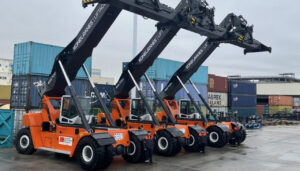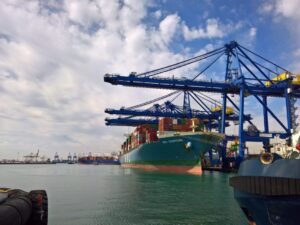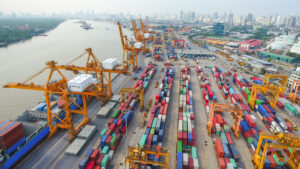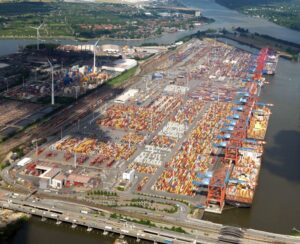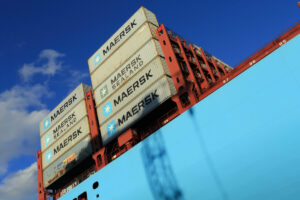Following successful completion of the testing phase of the BoxBay high bay storage (HBS) concept with more than 70,000 container moves, PTI spoke with one of the directors of the project about lessons learned and next steps for the team.
“Across the whole industry, the reactions have been very positive. Experts from all sectors agree that we have to address the space limitations for container terminals. It has been clear for a long time that the solution is not always to occupy new space or build new terminals,” according to Martin Aufschläger, Member of the Board of Directors, BoxBay FZCO.
He argued that the success of the BoxBay system thus far can be attributed to the fact that a terminal operator, DP World, and a supplier of heavy-duty high-bay warehouses, SMS Group, worked hand-in-hand from day one.
“The result of this unique partnership is our proof of concept in Dubai, which has been in operation since January 2021 and already met – if not exceeded – the highest targets,” he claimed.
The next major milestones will be the placement of solar panels on the HBS roof and implementation of technical and process improvements based on the first few months of operation, Aufschläger said.
He added that the team is now looking ahead to Expo 2020, which will be a “huge milestone” for BoxBay, as the team will showcase the system not only to port logistics insiders but also to the world’s decision makers from all other sectors.
“While the BoxBay site in the Port of Jebel Ali is not officially part of the Expo, we want to show the innovative novelty to as many potential customers and port experts as possible.
“In addition, our team is constantly gaining data from the warehouse system and working on technical improvements in all areas,” he said.
Compared to other ports utilising a similar stacking system, Aufschläger said, “While it is generally more expensive to grow vertically, there are many cases around the world where our concept is superior to all alternatives – not only in terms of capacity, but also in efficiency and sustainability.”

Lessons learned
Aufschläger said that because of the decades of experience that the SMS group specialists have with high bay storage racks, everything went pretty much as planned.
“Nonetheless, there were of course many learnings on a detailed level. For example, originally, we had installed too many sensors to control the feedback of the automatic processes. Also, important lessons were learned during assembly and installation,” he said.
“It is quite different to assemble such a system in an industrial environment than in a container terminal! Having said that, all civil engineering tasks have been completed without any issues and also the commissioning of the individual systems went very well.
“Storage and retrieval machines and the pallet circulation system worked well together from the beginning, and all automation software tests were successful. Seeing the new system set up within just one year was really impressive – and all this without a single accident – not even a cut finger!”
On challenges faced during the establishment of the high bay storage system technology, Aufschläger said while it may “sound odd” to date, there have been “no significant challenges with the establishment of the technology and company”.
Mega ships and congestion
As with others in the supply chain, Aufschläger acknowledged that the current record congestion on containers and the increase in trade volumes is choking up shipping terminals and ports globally.
“This is of course a challenge for supply chains and the smooth movement of goods around the world. The scale of difficulty increases by having to serve ultra large container ships that require special support and the ability to deal with peak demands. Waterside productivity requires maximum efficiency for the handling of more than 200 containers per hour.”

BoxBay is ultra large container vessel-ready, and according to Aufschläger responds to these demands with a higher turnover on the same yard space and a 20% higher quay performance as the yard is no longer a constraint.
“In operations numbers this means that while most of the port storage systems based on RTG technology have an annual capacity of approximately 45,000 TEU per hectare, BoxBay reaches 160,000 TEU annually on the same footprint.
“BoxBay also takes away the complexity of conventional yard strategy, planning and truck dispatch.”
BoxBay can handle 20-foot, 40-foot and 45-foot containers, and thanks to the design of the underfloor pallet circulation system, interfaces for trucks, rail or ships can be arranged at all four sides of the storage system.
Additionally, all individual material flows are decoupled from each other, creating an unmatched degree of flexibility. As all stacker cranes in the various aisles can be in operation at the same time without interfering with one another, extremely high throughputs of containers can be achieved.

